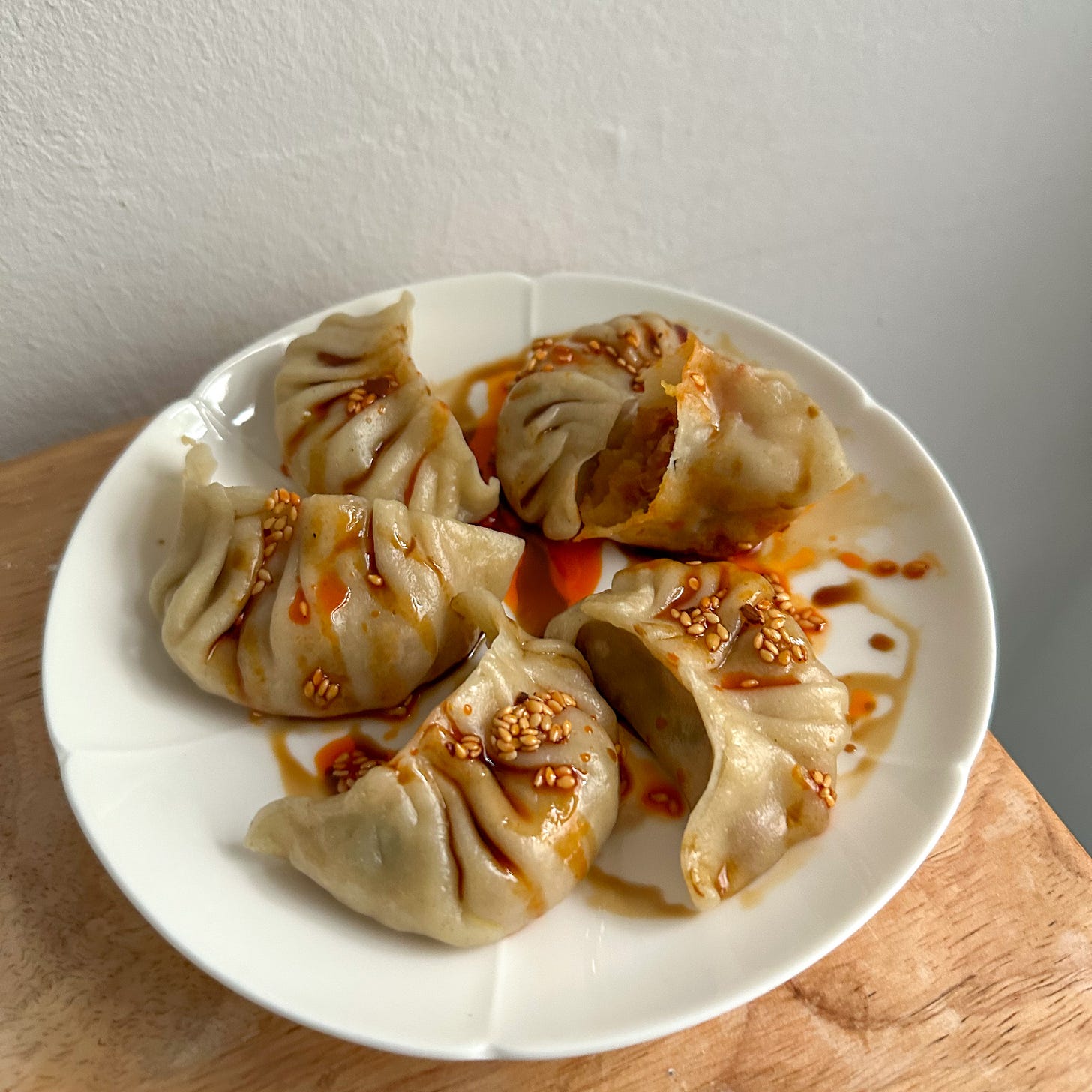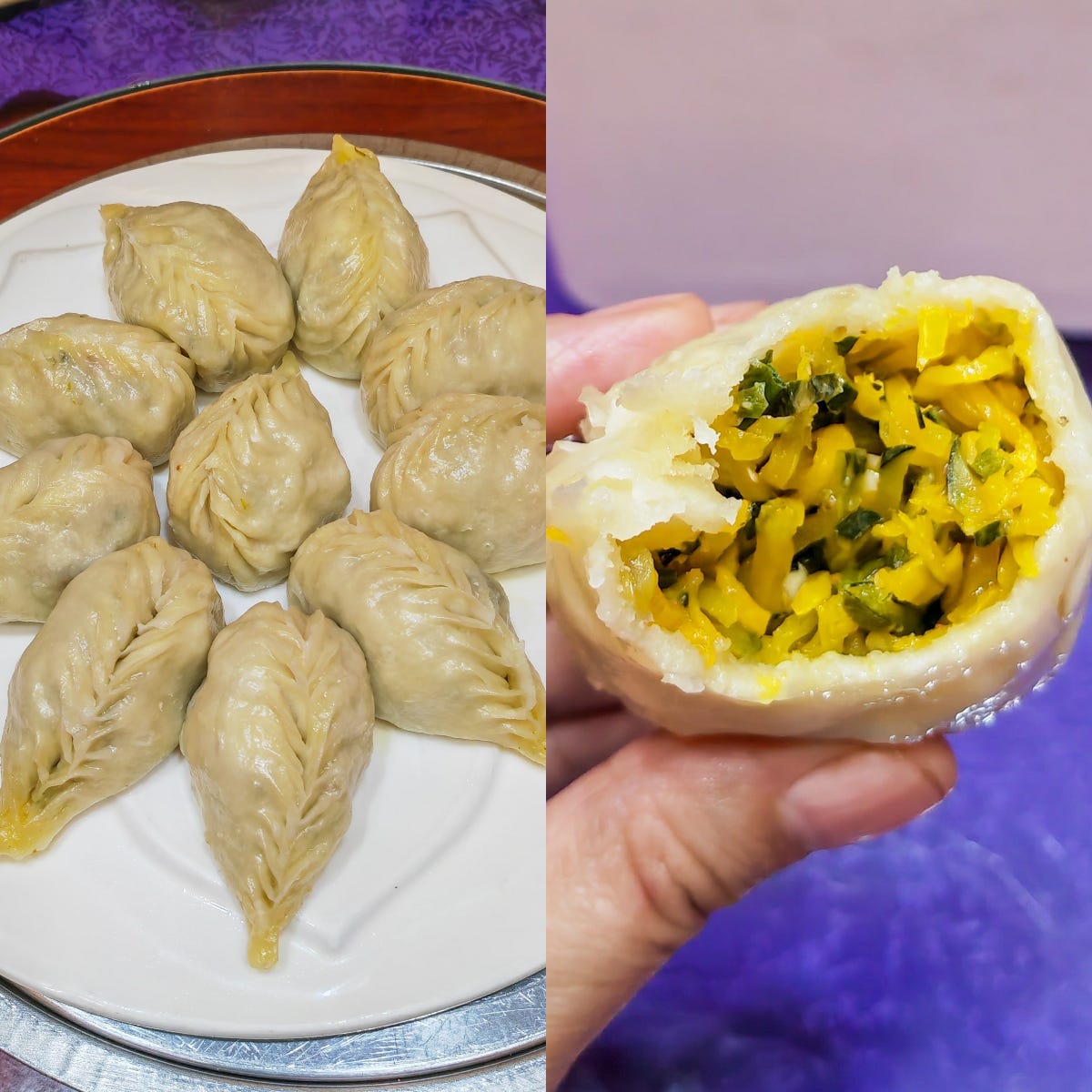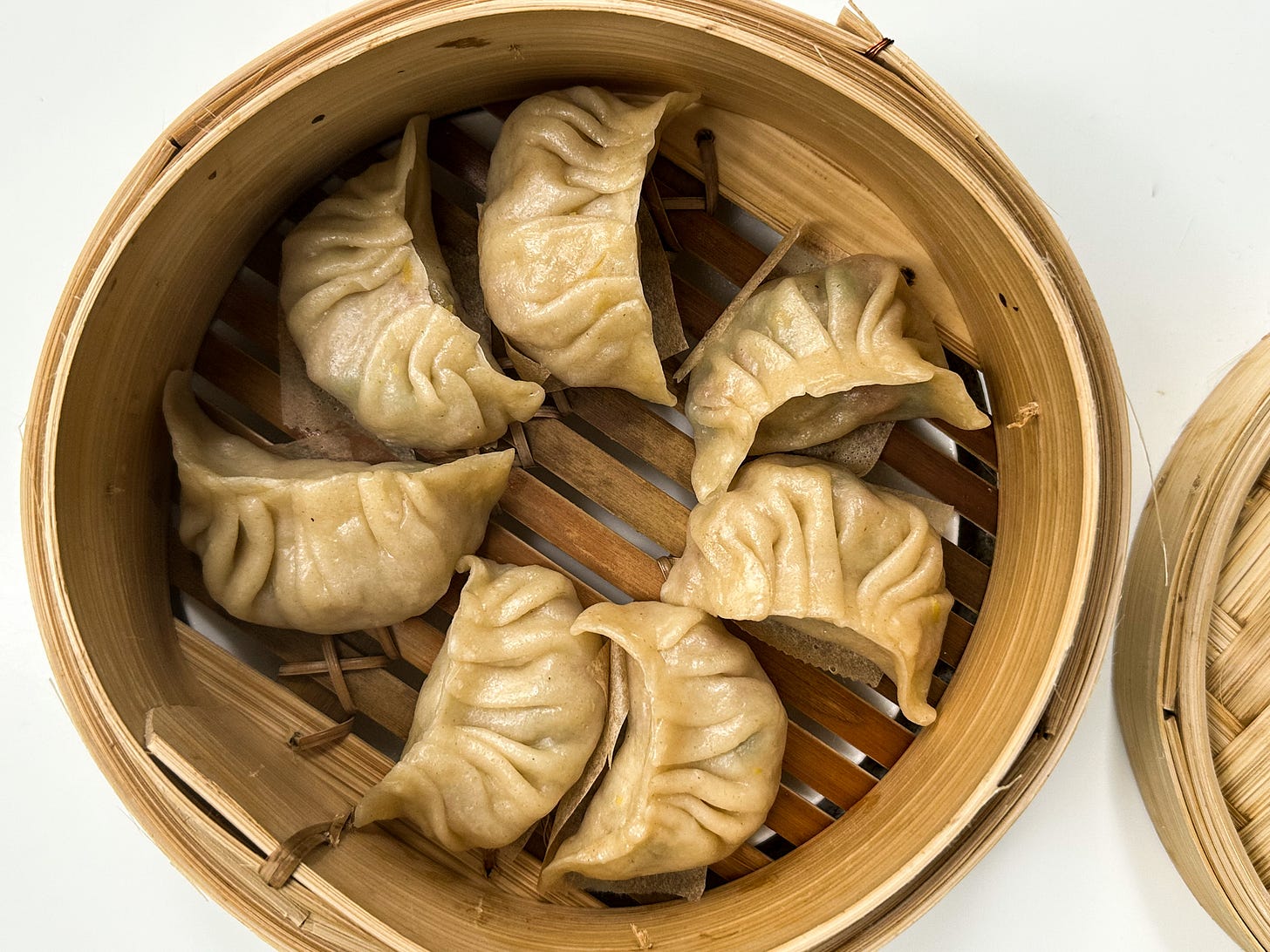Hi all! I’m back from a trip to Barcelona, if you’re interested what Chinese food I had there, check it out here.
This week, we’re making dumplings with a seasonal filling.
The moment summer ended, I was ambushed by piles of pumpkins and advent calendars. In Germany, these are supermarket staples throughout the year's end. All of social media is screaming: cook pumpkin.
Then I thought about a street snack I had some 20 years ago, called nangua jiaojiao (南瓜角角), a leaf-shaped dumpling filled with pumpkin and meat, commonly sold on the streets of the northeastern Sichuan town where I grew up. Although with this name I had no luck with finding a recipe but two random videos on the internet. Turning to my parents, who still live there, they confirmed that this snack wasn't a figment of my imagination, but it was no longer sold on the streets. As two resourceful eaters, they quickly located it in a restaurant and went for my sake. The restaurant owner was nice enough to send over video clips.
No measurements were provided. The basic idea was to mix shredded green pumpkin with marinated or cured pork belly, encased in a dumpling wrapper. According to my grandma, it’s a dough made with boiled water.
Through tests, I experimented with Italian pancetta (too tough to work with), and German lean bacon (too intense in flavor) then settled on Chinese sausages, as they pair best with scallion and ginger. I couldn’t get the firm green squash as shown above, but kabocha pumpkin makes a soft smooth filling after steaming.
Not perfect, but close enough. I told myself.
The idea of seasonal dumplings brought immense joy. I read about this in
’s book To Asia with Love. As I reflect on the various filling options such as ramps (wild garlic) in spring, zucchini in summer, mushrooms in autumn, and kale in winter (recipe), the seasonality aspect adds a new dimension to the timeless craft of dumpling making and provides a wonderful way to preserve produce with a short shelf life and to savor the season.So here’s my part of the social media fever with pumpkins. Watch me make it here!
The recipe
Makes about 20-24 pieces of dumplings
300g Pumpkin
100g Chinese sausage (lap cheong)
3 scallions (30g)
2 tsp minced ginger
1 tbsp soy sauce
1/2 tsp ground Sichuan pepper
1/2 tsp salt
*vegan option for Chinese sausage: five-spiced tofu
For the dough:
300g all-purpose flour
150-160g hot water (>80ºC)
1/2 tsp salt
Instructions
To make the dough, mix salt with flour. Then add hot water gradually while mixing with a chopstick to form shaggy dough pieces. When the dough is cool enough to handle, knead with your hands to form a dough. Cover with plastic wrap and let rest for about 10-15 min.
Slice the pumpkin with a mandolin to thin strips (or use a food processor to cut it small). Cut Chinese sausages in small pieces (cook them first if needed). Thinly slice scallion. Mix pumpkin with sausages, scallion, ginger, salt, soy sauce, sesame oil, ground Sichuan pepper, and salt. Mix well.
Take out the dough, and divide it into 4 pieces. Roll a dough ball into a log, while keeping the rest covered with plastic wrap. Cut into small pieces, each weighing about 12g. Pat into a round disk, and roll into a circle with a rolling pin. Add filling to the middle of the wrapper, fold, and seal. You can watch my video to see how to fold it the classic way or this one for the leaf shape.
Set a steamer over a pot, add steam or baking paper underneath the dumplings, and steam for about 10-12 min. over medium-high heat; or until the dough and filling are cooked. Serve with chili oil and sweet soy sauce.
Hot water dumpling dough (tang mian)
I first came into this technique by making scallion pancakes, where I used both hot and cold water to achieve a soft yet elastic dough. Hot water dough, or Tang mian (烫面) is a common technique in Chinese pastry making, meaning to add water over 70ºC to cook the starch of the flour.
Hot water makes the dough malleable and could reduce the resting time. The wrappers made with hot water dough are thinner and a bit transparent with a light beige color. In Chinese cooking, it’s used to make dumplings for steaming, while a cold water dough is better for thick dumplings for boiling, ie. traditional Nothern style dumplings.
If you’re keen on the seasonal dumpling idea as me, here’s a kale dumpling recipe I did in January.








I love that your parents went to investigate for you at that the stall owner sent you a video - that is just the sweetest. And I think your pleats looks fantastic. Now to locate a pumpkin despite the fact it's spring here, ha!